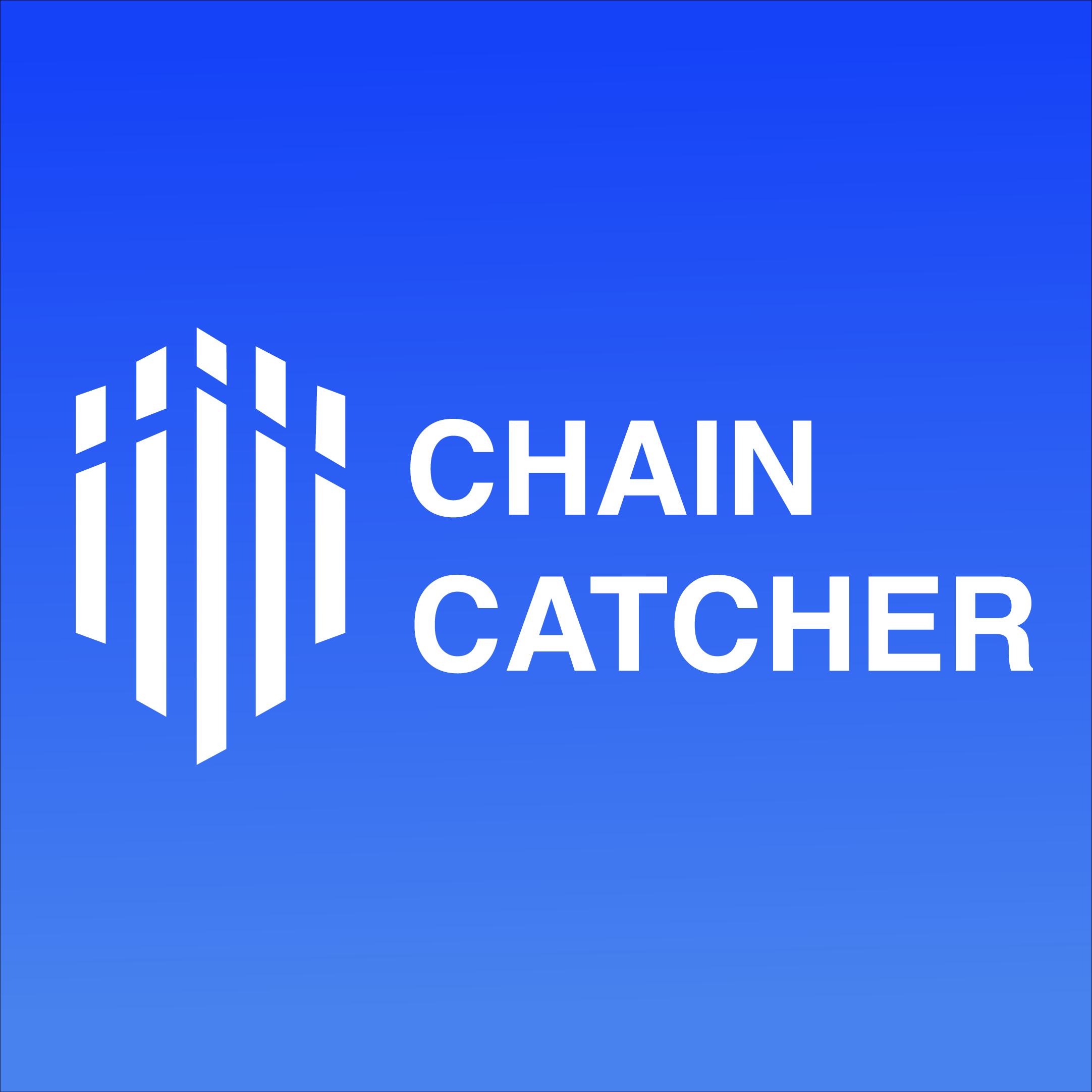Roam Growth is about to launch, with millions of users. The DePIN leader Roam is accelerating the implementation of a decentralized telecom data network ecosystem
Author: ChainCatcher
As a popular emerging narrative in 2024, every move in the DePIN field is under close scrutiny. In this race, Roam stands out with superior data, leading the market and becoming a top project in DePIN. As of December 15, 2024, Roam has surpassed one million self-built nodes globally, with user registrations exceeding 1.72 million, and it ranks first in the number of hardware nodes on DePINScan.
Roam's technological advantage is one of the key factors for its leadership in the field. It employs advanced OpenRoaming™ technology and is the only Web3 IDP project among the 15 corporate alliances in the Wireless Broadband Alliance (WBA) OpenRoaming™ program (standing shoulder to shoulder with giants), supporting over 4 million OpenRoaming™ available WiFi hotspots in more than 190 countries worldwide.
The above data also proves the feasibility of large-scale adoption of Web3 applications in areas closely related to users' daily lives during their implementation. Roam's user-friendly business model in the decentralized wireless network field has undoubtedly been proven successful.
In October this year, Roam announced the construction of a global Telecom Data Layer, while launching Roam eSIM to rapidly accumulate a large user base for the ecosystem in a low-cost, secure, and convenient manner, paving the way for Roam Telecom Data Layer's ecological layout.
Now, as one of the four key modules of Roam Telecom Data Layer, Roam Growth is about to launch, marking the arrival of a new era of continuous income generation for network participants.
In simple terms, Roam's DePIN Yields are coming.
What is Roam Growth? An Analysis of the Roam Telecom Data Layer Ecosystem
Roam (formerly MetaBlox) was founded in 2021, aiming to create an open global wireless network that provides enterprise-level WiFi security services, supporting seamless access to OpenRoaming™ and self-built WiFi nodes globally.
Roam has completed three rounds of investment. At the end of 2023, it secured $5 million in funding led by Anagram and Volt Capital, with participation from Comma3 Ventures, ECMC Group, Awesome People Ventures, Stratified Capital, DePIN Labs, Future 3 Campus, IoTeX, ZC Capital, and JDI. Angel round participants Synergis and SNZ continued to invest in the strategic round. In April 2024, Roam received further investment from Samsung Next following the strategic round.
The upcoming Roam Growth is a key module in the Roam ecosystem, designed to create sustainable income for network participants, supporting collaboration between users and other developers to drive innovation and ecological construction of decentralized network applications. The platform helps users transform network devices, such as Roam routers, into powerful economic tools through automated service integration and seamless network connectivity. Users can utilize Roam mining machines to support functions such as CDN and IP address-based services, achieving multi-mining capabilities and generating continuous revenue.
The first phase of Roam Growth supports router purchase plans through Huma loans, meaning users can acquire Roam routers (understood as mining machines) at a low threshold, further lowering the barrier for user participation in the Roam ecosystem. Roam and Huma have launched a DePIN hardware loan program, allowing users to quickly obtain loans from the Huma platform based on their actual situations to acquire Roam's Wi-Fi hardware devices, thus participating in the construction of a global decentralized Wi-Fi network and receiving ongoing rewards.
In the future, Roam will announce more participation methods, continuously expanding profit channels for network participants, attracting more developers and users to join the Roam ecosystem, and further improving and enriching the entire ecological construction to achieve sustainable development and growth.
It is worth noting that Roam Growth is just one module of the four key modules in the Roam Telecom Data Layer ecosystem; the Roam Telecom Data Layer is the top priority in the ecological planning. This ecological plan can be understood as the Physical L1 of the DePIN ecosystem, aiming to connect and share data among people, devices, assets, and AI through wireless networks and the DID+VCs verification mechanism, jointly creating a cohesive and highly interactive BoT (Blockchain of Things) ecosystem.
This plan includes Roam Network, Roam Growth, Roam Discovery, and Roam Community, focusing on network incentive construction, continuous income generation for network participants, support and incubation for connectable or embedded projects, and community governance, respectively:
1. Roam Network
Roam Network plays a key role in the entire Roam Telecom Data Layer ecosystem, responsible for network infrastructure construction and network incentives. Its decentralized global WiFi roaming network serves as the foundational support for the entire ecosystem's operation. Through a token incentive mechanism, it greatly motivates users to participate in network construction and node verification activities. For example, users generate a large amount of valid data based on geographic location and time during their participation in network construction and node verification. This data, once organized and packaged, becomes the basic block of the Telecom Data Layer for use by other project parties within the ecosystem, achieving the value flow and sharing of data.
The entry-level way for users to participate in the Roam network is also very convenient; they only need to download the Roam App from the App Store or application store to add WiFi points globally or check in at existing WiFi nodes, earning Roam Points in the process. Roam's WiFi nodes are divided into two main types: OpenRoaming™ nodes and self-built WiFi nodes. OpenRoaming™ allows users to seamlessly switch between different networks globally without repeatedly logging in or entering passwords, making international roaming exceptionally smooth. Self-built WiFi nodes come from users sharing personal or public WiFi through the Roam app. Currently, Roam shares 4 million OpenRoaming™ nodes from WBA and over 1 million self-built WiFi nodes.
In the future, with the launch of TGE, Roam Points can also be exchanged for ROAM tokens through burning, and as the ecosystem continues to develop, mining machine users can expect to enjoy more Roam Points exchange rights.
2. Roam Discovery
Roam Discovery plays an important role in encouraging innovation and incubating projects within the ecosystem. It actively attracts third-party developers and project parties to join the platform, providing a good incubation environment for decentralized applications based on Roam data. Here, developers can fully utilize Roam's vast user base, rich network data, and advanced technical architecture to develop various creative and practical decentralized applications.
This will enrich the diversity of the Roam ecosystem, further enhance its attractiveness and competitiveness, and help Roam continuously expand its territory in the field of decentralized telecom data networks, continuously releasing ecological value.
3. Roam Community
Roam Community is an important module that provides users with a platform for interaction, feedback, and governance. By collecting user feedback, it timely understands user needs and shortcomings within the ecosystem, thereby optimizing and improving products and services to continuously enhance user experience. In terms of community governance, users can participate in the formulation of ecological rules and decision-making processes, jointly maintaining the healthy and orderly development of the Roam ecosystem.
The launch of the Roam Growth product will accelerate the implementation of the Roam Telecom Data Layer, strengthening its position in the decentralized wireless ecosystem.
Why is it Worth Participating? Roam is an Innovative Pioneer in Wireless Operators
Why is Roam Growth worth participating in? Among innovative wireless operators, Roam is undoubtedly a pioneer, and past data performance indicates that Roam has limitless potential.
Roam has quickly attracted a large number of real users through the construction of OpenRoaming+ rewards eSIM traffic or points.
Roam is the only Web3 IDP project among the 15 corporate alliances in the WBA OpenRoaming™ program. OpenRoaming™ was developed by WBA and Cisco and launched in May 2020, aiming to provide seamless connectivity for users roaming between different WiFi networks. Unlike traditional methods, users do not need to manually connect, enter passwords, or provide personal information each time; OpenRoaming™ simplifies the authentication process. This innovation not only enhances the convenience and security of connections but also minimizes the risk of data breaches and unauthorized access.
Current WBA members are mostly large fixed operators, such as British Telecom (BT), Comcast, and Time Warner Cable; seven of the world's top ten mobile operator groups (ranked by revenue) have joined WBA, and other WBA members include tech giants like Cisco, Google, and Intel.
In terms of node quantity and coverage, Roam has built a strong influence globally. Currently, Roam has over 4 million OpenRoaming™ available WiFi hotspots in more than 190 countries, supports over 1 million self-built WiFi network nodes, and has surpassed 1.7 million registered users, maintaining a continuous growth trend.
Roam eSIM is a virtual eSIM card that currently covers over 160 countries. Users can obtain international traffic for free through the Roam App without needing a physical card and without replacing their original eSIM card, allowing for instant activation and dual SIM support. This means users can easily achieve cross-border network connectivity with Roam eSIM.
Additionally, users can participate in network construction by checking in at WiFi points within the app to receive free eSIM traffic, further enhancing user engagement and saving on communication costs, increasing user stickiness and favorability towards the Roam eSIM product.
Data shows that since the launch of Roam eSIM, the number of users has grown from 750,000 to over a million in less than a month.
As a leading project in DePIN, Roam has also made achievements in hardware devices. In January 2024, Roam updated its routers, launching the latest AC device Rainier MAX60 router and AP device Baker MAX30.
Among them, the Roam Rainier MAX60 router stands out, meeting the usage needs of most common scenarios, providing users with an easy way to share router nodes on the Roam network and enjoy a smooth, widely covered, and efficient network connection experience. It integrates advanced Wi-Fi 6 high-speed transmission technology, ensuring the router can provide ultra-high network speeds of up to 9.6 Gbps, connect over 200 devices simultaneously, and cover an area of about 150 square meters, achieving seamless sharing in multi-user environments. It features advanced low-power design and 2TB expandable storage, and it is the first to support DApp applications, capable of running decentralized applications such as CDN, network storage, VPN, and AI. In terms of security, the Roam Rainier MAX60 router adopts the latest WPA3 security protocol, providing multiple authentication and high-strength encryption protection through a 256-bit encryption algorithm, greatly enhancing the security of user data, privacy, and funds.
It is worth mentioning that this router has unique highlights in mining functionality. For users, activating the Roam Rainier MAX60 mining machine for the first time can earn 3,000 Roam Points, and the router produces a fixed output of 60 Roam Points daily. Daily check-ins can also earn an additional 5 Roam Points, with a daily reward cap of 150 Roam Points, allowing for a maximum of 210 Roam Points per day. It will also support dual mining/multi-mining functions and other project airdrop rewards.
To reward users who purchase Roam mining machines, Roam airdropped a total of 20 million ROAM tokens to users who purchased various Roam mining machines before TGE during the ABS 2024 Asia Blockchain Summit and to early MetaBlox NFT holders.
In addition, according to Roam's latest released 2025 Roadmap, Roam mining machines will be updated in Q4 2025 to make their performance, systems, and application scenarios richer and more practical.
Roam's BoT Ecological Goals Depend on DID+VCs Privacy Protection Technology
To understand Roam, one must understand Roam's DID+VCs privacy protection technology. As a decentralized wireless operator, the technology used by Roam in the privacy field has attracted significant attention.
DID (Decentralized Identifier) is a new type of identity identification method that gives users the right to autonomously decide which identity to use, allowing them to break free from the limitations of fixed identity models under traditional centralized systems and flexibly choose to display their identity information based on different scenarios and needs. For example, when connecting to the Roam network, users can verify themselves using their self-defined DID without exposing excessive real personal identity details.
VC (Verifiable Credential) further strengthens privacy protection, allowing users to decide which information can be disclosed externally. In practical applications, for instance, when needing to verify certain necessary information to the network, users can precisely control the scope of the information shared, providing only the necessary information while keeping other sensitive information confidential.
Roam combines DID and VC technology, eliminating SSID, passwords, and login credentials in traditional WiFi connections, ensuring that users can decide which identity and which information can be put on-chain, returning control of user privacy information back to the users. When users use Roam network services, whether connecting to WiFi, conducting transactions, or participating in other network activities, their privacy information is fully respected and protected, without worrying about information being collected or misused without reason.
The DID+VCs privacy solution proposed by Roam not only effectively safeguards user information security but also lays a solid foundation for cooperation between Roam and Web3.0 projects.
On April 2, 2024, MetaBlox officially changed its name to Roam and migrated its ecosystem to the Solana mainnet. All on-chain transactions of the Roam network will be uploaded to the Solana blockchain, including core data such as user check-ins, DIDs (Decentralized Identifiers), and VCs (Verifiable Credentials), providing privacy-protected 3W data support for DApps within the Solana ecosystem.
Due to a shared vision in data security, product usability, and seamless integration of Web3 functions, in June 2024, Roam integrated its services into the Solana Mobile Saga phone, further enhancing the accessibility and security of WiFi.
Leveraging the existing decentralized WiFi roaming network and DID+VCs verification mechanism, Roam has successfully established data connections and sharing among people, devices, assets, and AI, creating a cohesive and highly interactive BoT ecosystem. Whether for individual users synchronizing and using data across different devices or enterprises managing asset digitization and AI smart applications, they can rely on the data connection and sharing system built by Roam to achieve more efficient, convenient, and secure operations, bringing unprecedented value and development opportunities to all participants in the ecosystem, further solidifying Roam's unique position in the decentralized telecom data network ecosystem.
The launch of Roam Growth will undoubtedly become a powerful engine for the continuous development of the Roam ecosystem, creating more income opportunities for network participants and further strengthening the construction of the entire decentralized wireless ecosystem.
On one hand, it will continue to expand diverse participation methods. For example, in addition to the existing router purchase plan through Huma loans that allows users to acquire Roam routers at a low threshold to participate in network construction and earn rewards, more cooperative models with different hardware devices are expected to be launched in the future, facilitating more users to participate, such as collaborating with other brands of smart routers to achieve compatibility and expansion of functions, allowing more network devices to connect to the Roam network and transform into profit-generating tools. Moreover, for developers, Roam Growth may open more interfaces and resources, attracting more third-party developers to join in jointly developing innovative applications based on the Roam ecosystem, such as creating customized network service applications for specific industries, and then allowing developers and network participants to profit together through revenue-sharing models.
On the other hand, in terms of income generation, Roam Growth will continuously optimize the incentive mechanism. Taking Roam mining machines as an example, the income generated will not be limited to the current CDN services and WiFi multi-mining functions; it may unlock more revenue channels based on market demand and technological development, such as those generated from big data analysis and edge computing. At the same time, as the user base continues to expand, the rewards network participants receive for sharing network resources and providing node services are also expected to increase, such as issuing more reasonable and generous Roam Points rewards based on node activity, service quality, and other dimensions. These rewards can be exchanged for corresponding rights or currency, effectively translating into sustainable income, allowing every participant in the ecosystem to gain more value in this decentralized wireless ecosystem with the help of Roam Growth, promoting the continuous prosperity and growth of the ecosystem.
Now that AI is back in the spotlight, thanks to Roam's natural advantage of high compatibility with data structures in the DePIN and underlying public chain fields, the deep integration of Roam and AI is an inevitable trend for its future development.
The decentralized telecom data network ecosystem built by Roam has accumulated a vast amount of user behavior data, network connection data, etc., which are extremely valuable "nourishment" for AI. AI can analyze this data to achieve intelligent scheduling of network traffic, precise prediction of user needs, and other functions. For example, based on users' usage habits, it can proactively recommend high-quality WiFi nodes that users may need to connect to or optimize network bandwidth allocation to ensure users have a good network experience in different scenarios. Roam also has the potential to engage in deep cooperation with multiple AI vertical projects, such as in smart home fields, industrial IoT, social interaction, and more.
We look forward to the launch of Roam Growth, the continued implementation of the Roam Telecom Data Layer, the vision of Roam's BoT ecosystem, and the sparks that will fly between leading DePIN projects and AI.











